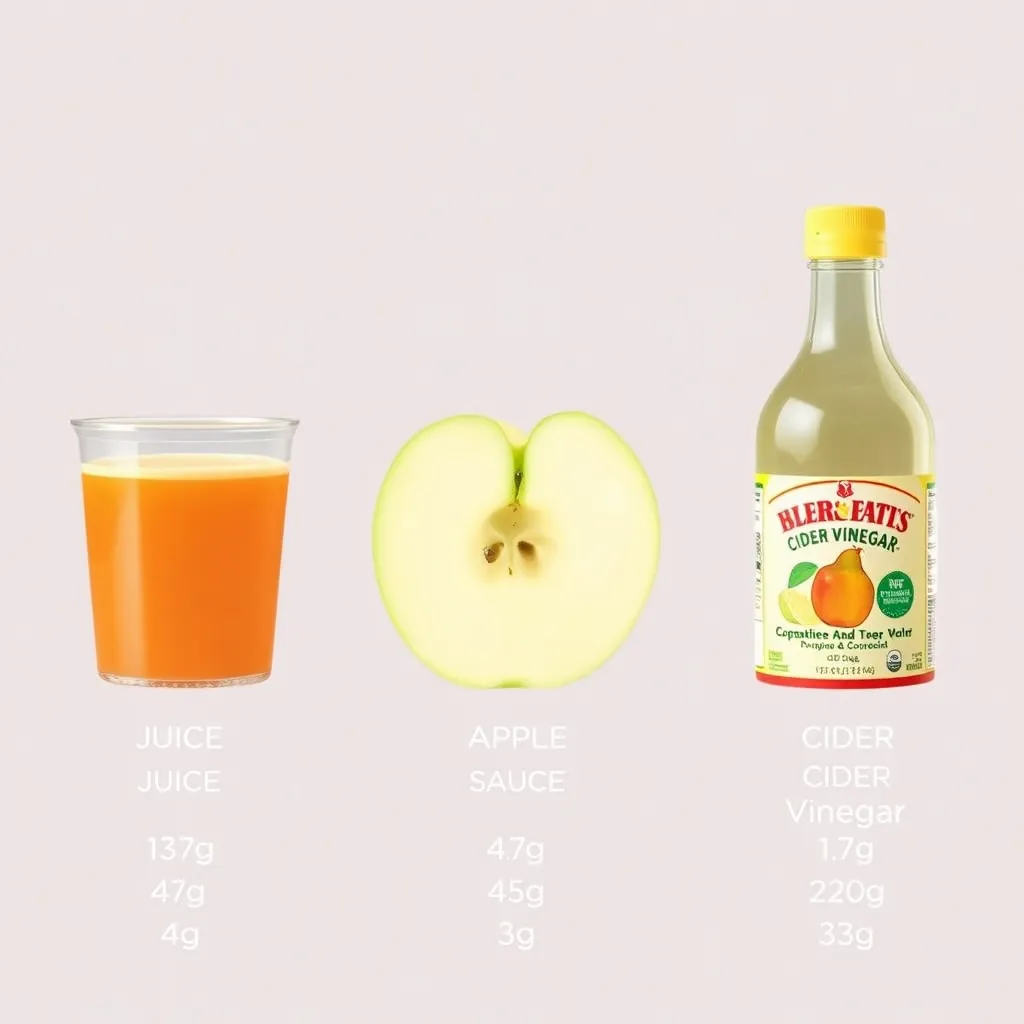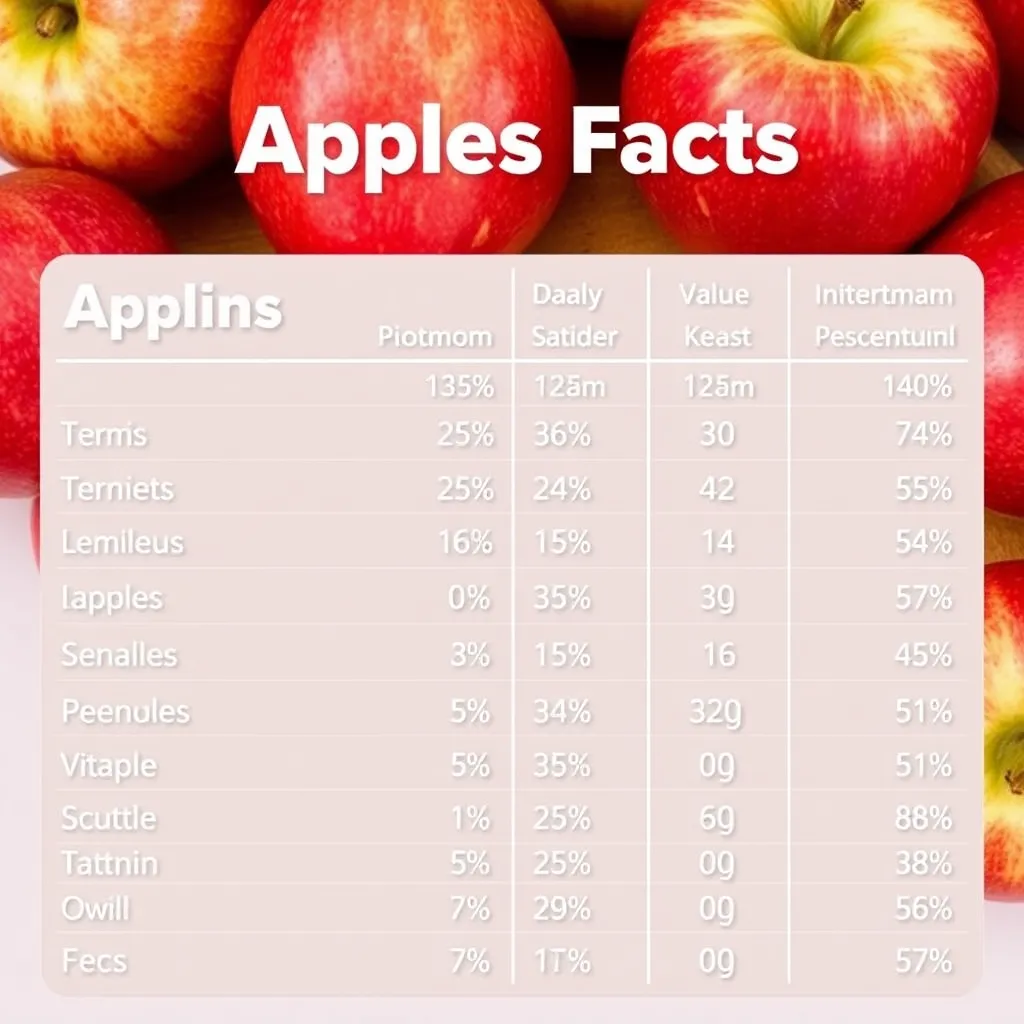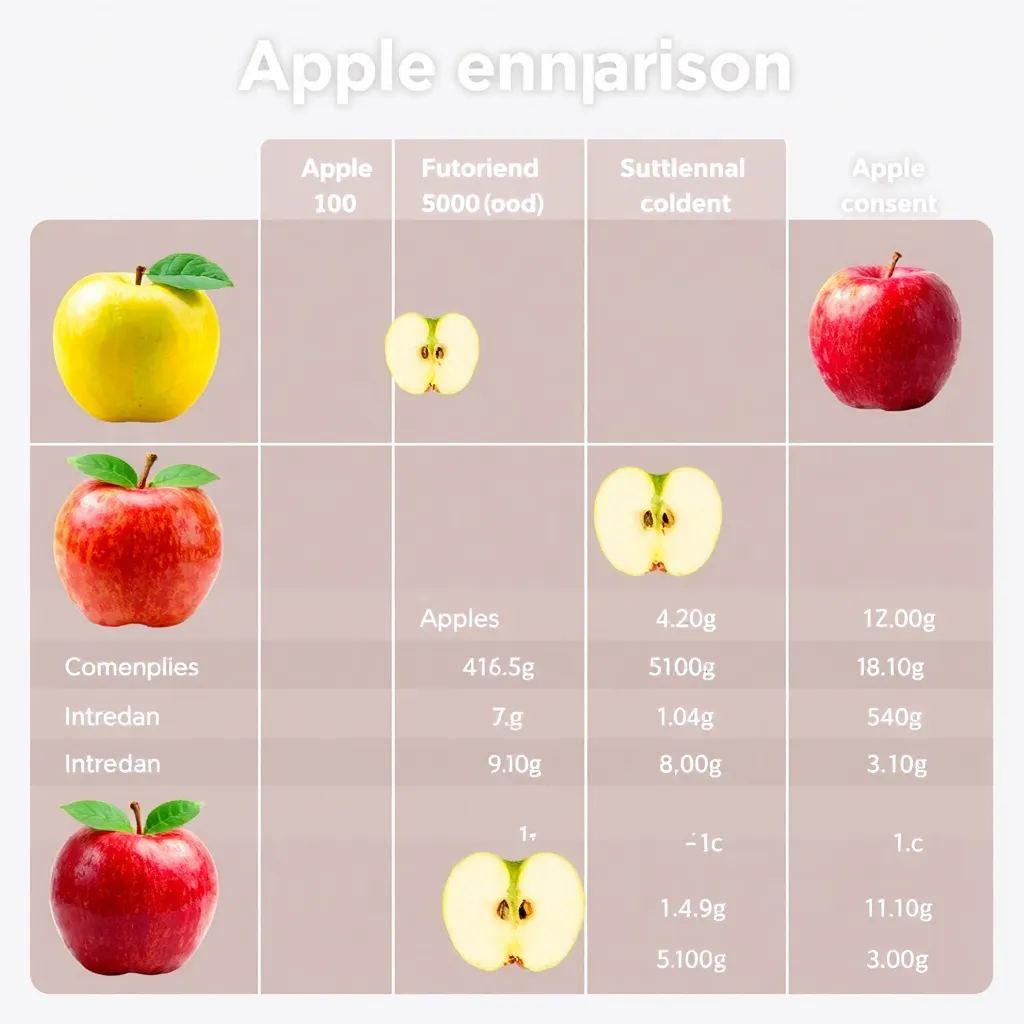· other · 5 min read
Apple Products Nutrition: From Juice to Cider Vinegar
Discover how different apple products compare nutritionally, from fresh-pressed juice to apple cider vinegar. Learn about processing effects on nutrients and how to choose the healthiest apple products for your diet.

Oh, my darling family! Gather ‘round while Grandma shares her wisdom about all the wonderful things we can make from apples. You know, back in my day, we didn’t waste a single apple from our orchard – we turned them into everything from fresh juice to that magical apple cider vinegar that my own grandmother swore by!
Let me tell you about each special apple treat, just like I’m sharing recipes from my beloved recipe box. Each one has its own personality and special benefits, just like my grandchildren!
First, let’s talk about fresh apple juice. When you press those crisp apples (like we used to do in the backyard with that old press), every 8 ounces gives you:
- 115 calories of pure goodness
- 24 grams of natural sugars (nature’s candy, I always say!)
- A splash of fiber (though not as much as eating the whole apple, my dears)
- 12 milligrams of vitamin C to keep you healthy
- 250 milligrams of potassium for your heart
- And all those wonderful antioxidants that keep you young (though love and laughter help too!)
Now, raw apple cider is a bit different – it’s like juice’s more mature cousin! In the same 8 ounces, you’ll find:
- 120 calories
- 25 grams of those natural sugars
- A bit less vitamin C, about 10 milligrams
- 240 milligrams of potassium
- And still plenty of those good-for-you antioxidants
Oh, and let me tell you about store-bought juice, though I still prefer making our own. It’s convenient (especially for busy moms like my daughter Sarah), but it’s a little different:
- About the same calories (115-120)
- A bit more sugar usually (24-28 grams)
- Much less vitamin C (only 2-4 milligrams)
- Still good potassium (230 milligrams)
Now, my special favorite is apple cider vinegar – or ACV as my granddaughter calls it. Just one tablespoon contains:
- Almost no calories (just 3!)
- No sugar at all
- Something called acetic acid (5-6%) – that’s what gives it that tang!
- A bit of potassium (11 milligrams)
Let me share with you how processing changes these products, just like how different cooking methods change my apple pie recipe. When we make fresh juice by pressing (like we do at the fall harvest festival), we keep most of the good stuff in there. But when they make it at the factory, some of those nutrients get lost along the way – just like how store-bought cookies never taste quite like Grandma’s homemade ones!
For those of you wondering about the best ways to enjoy these apple goodies, here’s what I’ve learned over my many years:
Fresh juice is wonderful:
- First thing in the morning with breakfast
- Mixed with a little sparkling water for a special treat
- Right after working in the garden (so refreshing!)
Apple cider vinegar needs special care:
- Always dilute it with water, my dears – it’s strong stuff!
- I take a tablespoon in warm water first thing in the morning
- Some people like it with a touch of honey (local honey is best, just like local friends!)
Now, about storing these precious products (I learned this from my mother, and her mother before her):
- Keep your fresh juice in glass containers if you can
- Store it in the refrigerator, not on the counter
- Apple cider vinegar likes a cool, dark place – just like my cat Mittens!
- Check for the “mother” in your vinegar – that’s the cloudy bits that make it extra special
Let me answer some questions my family often asks me:
Is fresh juice better than store-bought? Well, my dears, it’s like the difference between a hug in person and a hug over the phone – both are nice, but fresh has that special something! Fresh juice has more nutrients, but store-bought is still good when you’re busy.
How much apple cider vinegar should you take? Like my grandmother used to say, “A little goes a long way!” Start with a tablespoon diluted in water once a day. Listen to your body – it’ll tell you what it needs.
What’s the best way to store everything? Keep your juice cold, your vinegar cool and dark, and everything in glass if you can. Just like how I keep my precious family photos in a special album!
Should you choose pasteurized or unpasteurized? Well, for most healthy folks, either is fine. But if you’re expecting (like my daughter-in-law Jane) or have a sensitive tummy, stick to pasteurized to be safe. Better safe than sorry, as I always say!
The most important thing to remember, my loves, is that all these apple products have their place in a healthy life. Just like how every member of our family brings something special to our gatherings, each apple product has its own gifts to share.
Whether you’re enjoying fresh-pressed juice on a warm summer morning, or taking your apple cider vinegar like I taught you, you’re carrying on traditions that go back generations. And that makes this grandmother’s heart very happy indeed!
With all my love and apple wisdom, Grandma
P.S. Don’t forget to share these healthy treats with someone you love – spreading health and happiness is what life’s all about!


